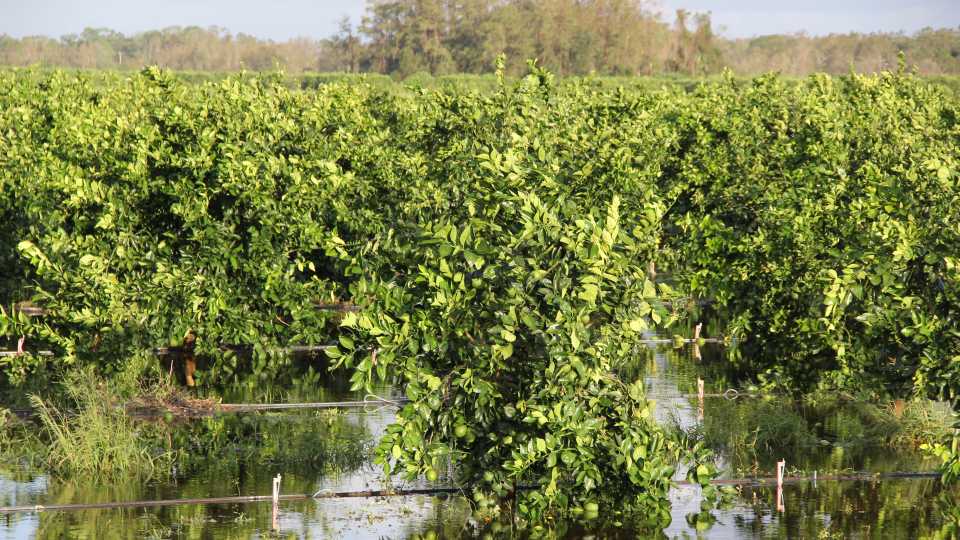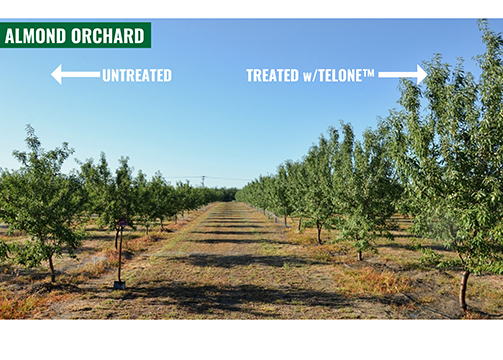Tips to Help Hurricane-Stressed Citrus Trees

Thanks to Hurricane Irma’s inundating rainfall, root health for citrus trees standing in water for days could be a major issue. Photo by Monica Ozores-Hampton
After years of fine-tuning, growers seemed to be zeroing in on citrus nutrition and health programs that appeared to be having some impact on production. There was even evidence that trees were loaded up this season and set to produce a higher yield than last year. That was before Hurricane Irma.
After the storm, growers are now assessing damage to trees and root systems, some of which had water saturating them for days on end. Tripti Vashisth, an Assistant Professor of horticultural sciences and UF/IFAS Citrus Extension Specialist, says growers should be scouting for damage soon after the storm and the weeks following.
The first order of business is pruning away broken limbs as they can be an entry point for disease. She also advises growers to exam trunks for damage or rotting, as well as checking root systems.
“Flood damage to roots can be determined by digging into soil and smelling roots and soil samples,” Vashisth says. “Sour odors or rotten-egg smell (indicating hydrogen sulfide) is a sign that feeder roots are damaged. Growers also should be looking for symptoms on leaves. This includes leaf yellowing, chlorosis, wilting, dieback, and leaf and fruit drop. Compromised root systems also will be unable to uptake water.”
Post-Storm Tree Care
Vashisth says anything growers can do to reduce tree stress after the storm is a plus. While she recommends removal of broken and dead limbs, she says to avoid heavy pruning of trees in the wake of the storm.
“Light and frequent fertilization (all nutrients) should be applied once water has receded,” she says. “Performing leaf and soil nutrient and soil pH analysis also may be a good idea to assess tree requirements and needed adjustments to fertilizer programs. Multiple doses of light fertilizer should be made until the trees bounce back.”
As to how long it would take trees to bounce back, it depends on the extent of damage done to trees and other interactions with disease. But, Vashisth adds that good care will help trees bounce back more quickly from damage incurred to trees.
The HLB Effect
Since this is really the first major hurricane to hit Florida with HLB endemic in all groves, Vashisth says it is too early to know how the disease will interact with the stress caused to the trees by Irma.
“Growers should carefully observe their trees for symptoms even a few weeks after the hurricane,” she says. “Due to the presence of HLB, the trees are already under constant stress, therefore high wind speeds, excess rainfall, and standing water all will add to that stress.”










